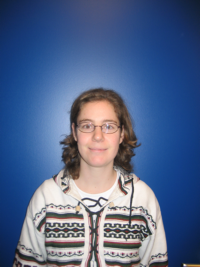Micro-patterned interfaces affecting transport through and along membranes
Promotion date: 9. January 2009
Promotor: Prof. Dr. Ing. Matthias Wessling, assistent-promotor: Dr. ir. Rob Lammertink
| Micro-patterns can be easily replicated in polymer films using etched silicon substrates in combination with the casting techniques, developed in the Membrane Technology Group. Different patterns and the presence of surface roughness lead to different wetting properties. Historically, membranes have been patterned for flux enhancement via an increase in surface area. Through permeation experiments, we have proven that the diffusion paths are also affected by micro-patterns, which can enhance mass transfer through the membrane even more. A micro-pattern can lead to a different interaction of a liquid with a solid, e.g. a hydrophobic material becomes more hydrophobic by patterning. Patterns could affect concentration polarization at membrane surfaces. Processes like pervaporation could therefore benefit from micro-patterns. |
Can you describe a nice finding during your thesis project?
Patterned PDMS surfaces are more hydrophobic. But the value suddenly changed during a standard contact angle measurement. Careful analysis showed a transition point (non-wetting to wetting), leading to a study of the influence of different patterns on the wetting process.
When pillars with a five micrometer diameter are placed closely together in a square array, this liquid does not spread in circles, as you would expect, but in rectangular shapes. This we studied, using the microscopic techniques combined with the high speed cameras by Detlef Lohse’s group Physics of Fluids.
These findings led to articles in Physical Review Letters and Europhysics Letters.
Do you like working in the lab?
Yes, very much so. During these four years I learned to benefit from performing experiments more boldly. Good preparation is important, but in the beginning I was acting far too carefully.
Being part of MESA+ means you don’t need to travel to other universities to prepare everything you need. For example, with some help I could make the molds for casting, using the equipment and knowledge already present at MESA+.
Do you have some recommendations for MESA+?
I found the monthly presentations of my graduate colleagues very interesting and helpful. Perhaps MESA+ can extend these meetings, by also visiting the laboratories together. There you can see your colleagues at work, sharing experiences in a direct way. I think in the new building, there are good facilities to organize these new kind of knowledge transfer meetings.
Also important, I think, is the connection between MESA+ and companies in the region. Especially little companies don’t easily find their way to the university. It is important to show that we have special solutions in store, and that one can be an entrepreneur using ideas developed at MESA+.
What are your future plans?
Well, I am leaving for a world-tour, travelling with my partner. We like to begin in Eastern Europe, and travel from there to Jordan, using public transport. Then it is off to Asia, Australia and South/North America.
After that, I would like to apply for a job at a company research department to experience commercially driven research.

